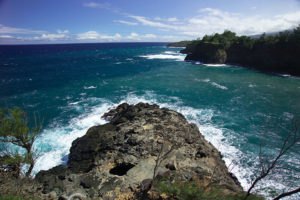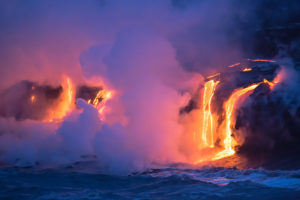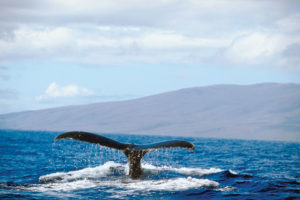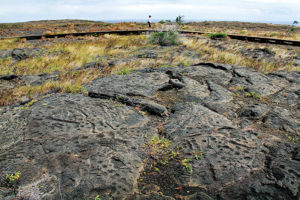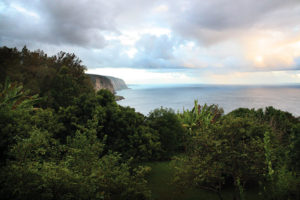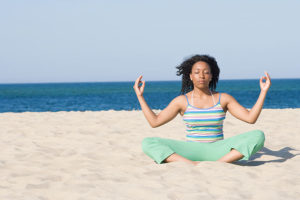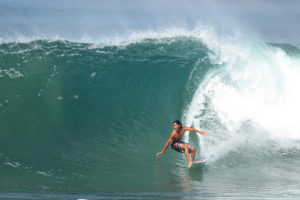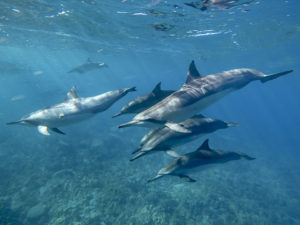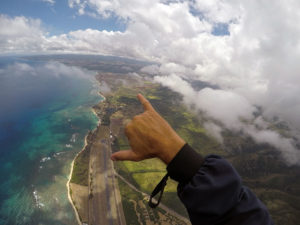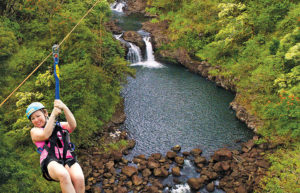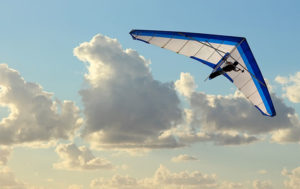Anyone who climbs aboard a vessel this time of the year and heads for the open ocean off Hawai‘i Island can expect to see HUMPBACK WHALES. There are so many of them that most boat companies don’t hesitate to guarantee sightings. (Truth is, it’s hard to miss a 40-ton humpback when it propels its 45-foot bulk to the surface and then disappears in an enormous salt-water splash!)
Every year, humpback whales swim 3,000 miles from their summer feeding grounds in Alaska to mate and calve in Hawai‘i’s clear, warm waters. The whales don’t arrive en masse, but researchers say there is a predictable order to their appearance in our waters. Generally, numbers peak in late December through mid-April.
Protected under endangered species laws, the humpback population is growing. In fact, an estimated 7,000-10,000 HUMPBACKS ARE EXPECTED TO CRUISE THROUGH HAWAI‘I’S WATERS THIS SEASON, coming and going at their own pace.
Humpbacks exhibit a variety of behaviors that should be visible in one form or another from boats and shoreline lookouts. You might see a whale blow, which refers to the act of breathing and the cloud of water vapor produced above the animal’s head during the process of exhalation. Or, you might see a tail slap, a pectoral slap or, if you’re lucky, a breach. This watery pirouette occurs when a whale propels itself out of the water, generally clearing the surface with two-thirds (or more) of its body. Then, in an amazing feat of marine gymnastics, the animal will throw one pectoral fin out to the side and turn in the air about its longitudinal axis.
Humpbacks are clever, resourceful and agile creatures. And the males, though they don’t have vocal cords, have developed an amazing ability to sing. Hear their complicated tunes over hydrophones available aboard most whale-watching vessels.
Curiosity is another trait known to humpbacks, so they may not be timid about approaching boats and will often go out of their way to interact with humans. It’s illegal, however, to get closer than 100 yards from a humpback. There are many ways to observe a humpback whale in the wild. Snorkel cruises are a good bet. Powered rafts and fishing boats also travel humpback territory.
Two good shoreline viewing sites are Lapakahi State Historical Park, north of Kawaihae at mile marker 14, and Kapa‘a Beach Park off Highway 270. Traveling north, turn left on the one-lane paved road just past mile marker 16. BODY GLOVE CRUISES 808-326-7122 OR 800-551-8911 DOLPHIN DISCOVERIES 808-322-8000



